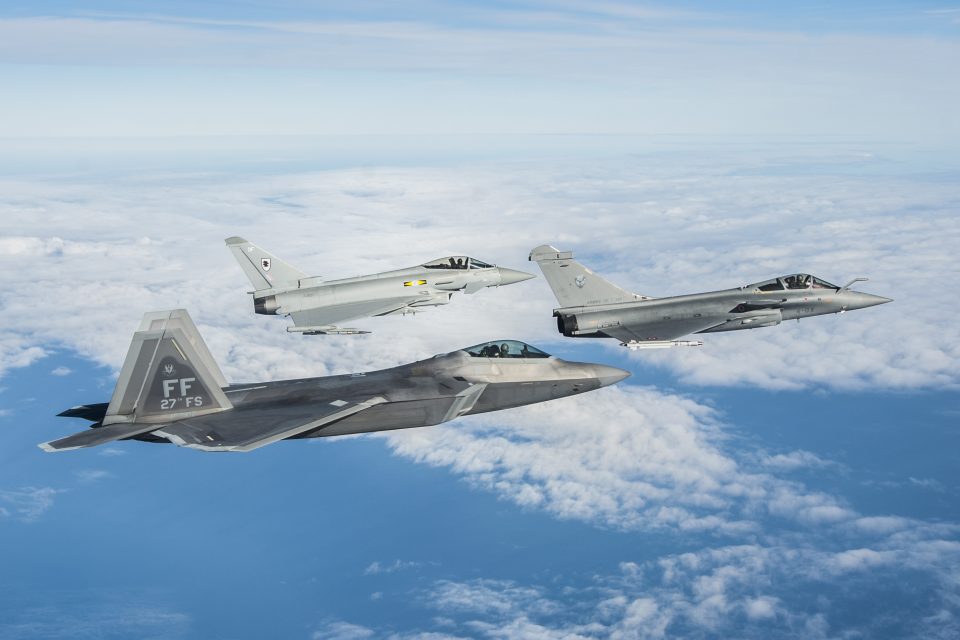2015-12-11 Six Rafales, eight Typhoons, along with two KC-135FR Stratotankers and two KC-30 Voyagers, made the trip across the Atlantic for the exercise that will last from Dec 2nd to the 18th.
Second Line of Defense will be visiting Langley during the exercise and have a chance to talk with the various participants.
The slideshow provides USAF photographs of the three aircraft along with the T-38.
Of course, given the distance the F-22 operates from other aircraft, these photos do not reflect any operational reality.
The exercise, hosted by the 1st Fighter Wing (FW), will focus on operations in a highly-contested operational environment through a variety of simulated adversary scenarios. According to U.S. Air Force Col. Pete Fesler, the commander of the 1st FW, the intent of the exercise is to gain an understanding of the logistics, support requirements, capabilities, tactics, techniques and procedures associated with the integrated operation of coalition front-line fighters.
“The RAF and FrAF are our vital strategic partners and allies in the current fight against extremism, and will be in any foreseeable future conflict,” said Fesler. “The trilateral exercise gives us an opportunity to train together in realistic counter-air and strike scenarios. This training is critical to ensure that we have day-one interoperability for future contingency operations.”
According to Fesler, international exercises like the Trilateral Exercise have helped the 1st FW learn to work with coalition partners in the past, such as during the Western Zephyr exercise in 2015, where the 1st FW worked with the RAF to enhance joint capabilities.
More than 500 people will be involved in the exercise, consisting of approximately 225 personnel from the U.S. Air Force, 175 from the RAF and 150 from the FrAF.
According to Fesler, partnering with coalition forces for training is critical to ensuring the 1st FW and its allies are ready to execute their mission when called upon.
The exercise will not only feature the U.S.’s Raptor, but also the RAF’s Typhoon and the FrAF’s Rafale as primary aircraft. The Trilateral Exercise will be the first time these coalition aircraft have flown together. Adversary aircraft will be replicated by the U.S.’s F-15E Strike Eagles and T-38 Talons. The U.S.’s Airborne Warning and Control System, as well as U.S. and FrAF tankers will also provide support during the exercise.
http://www.acc.af.mil/news/story.asp?id=123464373
David Cenciotti made a good comment about training and combat realities.
Interestingly, whilst the USAF Raptor, the British Typhoon and the French Rafale multi-role combat planes train in the U.S. to gain air superiority in a modern A2/AD (anti-access/area denial environment), the same three kinds of aircraft are currently involved in a real war against ISIS in Syria and they daily operate well inside a Russian super-MEZ (Missile Engagement Zone) created with the deployment of the Moskva guided-missile cruiser (with its S-300F) off Latakia and the installation an S-400 Triumf battery at Hmeymim airbase:
Perhaps an interesting real-world scenario to test at least a few of those procedures studied in the permissive skies over Virginia.
You train like you fight; you fight like you train.


